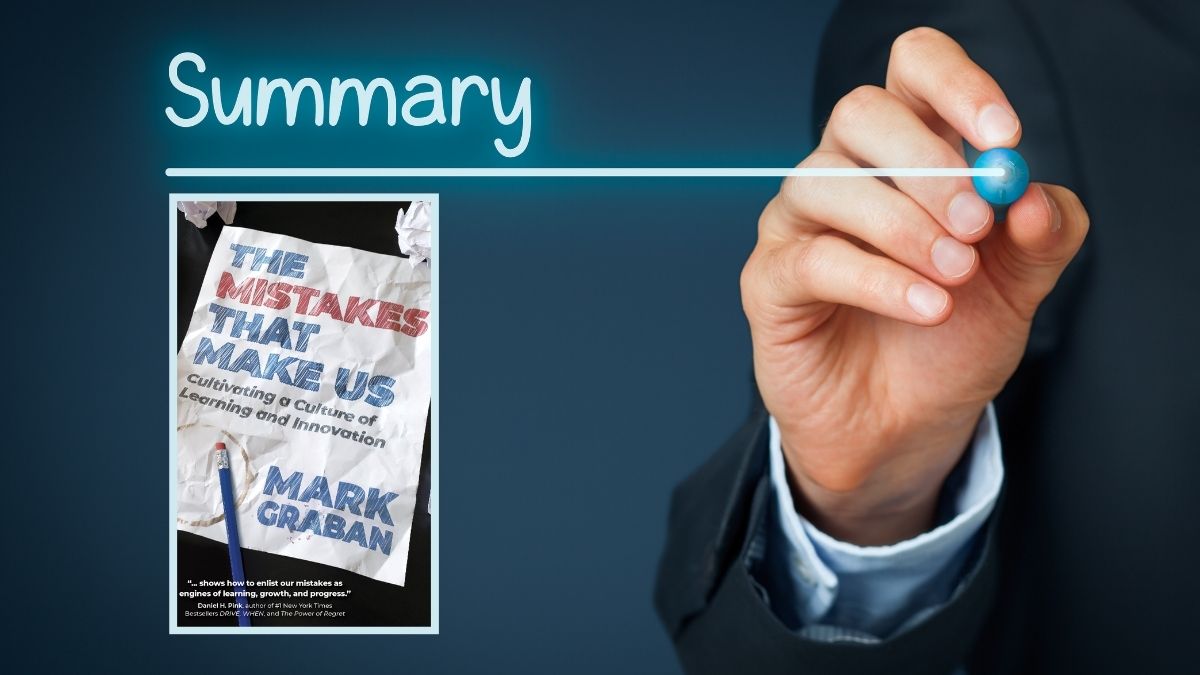Here is a ChatGPT-generated summary of my book. Check out a free sample here.
“The Mistakes That Make Us: Cultivating a Culture of Learning and Innovation” by Mark Graban explores the crucial role that mistakes play in personal and organizational growth. Graban’s central thesis is that mistakes, when approached with a constructive mindset, can become powerful drivers of learning, innovation, and continuous improvement. The book explores the ways leaders and organizations can create (or cultivate) a culture where mistakes are not feared but embraced as opportunities for growth.
Graban begins by emphasizing the inevitability of mistakes. He argues that making mistakes is a fundamental part of the human experience and a necessary component of any innovative endeavor. Rather than hiding or fearing mistakes, Graban suggests that organizations should encourage their identification and analysis. This shift in perspective helps detach mistakes from negative connotations, allowing employees to view them as learning opportunities.
One of the book’s core principles is the importance of positive thinking about mistakes. Graban asserts that a positive attitude towards mistakes fosters a psychologically safe environment where employees feel comfortable admitting errors without fear of punishment. This psychological safety is crucial for open communication and collaborative problem-solving. Graban highlights that when leaders model this behavior by openly admitting their own mistakes, it sets a precedent for the rest of the organization.
Admitting mistakes is another crucial theme in the book. Graban argues that acknowledging and owning up to mistakes is the first step toward learning from them. He provides numerous examples from various industries to illustrate how admitting mistakes can lead to significant insights and improvements. This practice helps not only address the immediate issue but also prevent future errors.
The concept of kindness is also central to Graban’s philosophy. He believes that being kind to oneself and others when mistakes occur is essential for maintaining morale and fostering a supportive work environment. Kindness in response to mistakes encourages a culture of empathy and understanding, which is vital for continuous improvement.
Another important aspect discussed in the book is preventing mistakes through proactive measures. Graban emphasizes the need for organizations to implement systems and processes that minimize the likelihood of errors. This involves identifying potential risks and implementing safeguards to mitigate them. However, he also acknowledges that not all mistakes can be prevented; thus, the focus should also be on learning from those that occur.
Encouraging open communication is crucial for a mistake-friendly culture. Graban advocates for creating an environment where employees feel safe to speak up about their mistakes. This openness allows for collective problem-solving and ensures that lessons learned from mistakes are shared across the organization. Graban provides examples of companies that have successfully implemented such cultures, highlighting the positive impact on their innovation and performance.
The book also discusses the need to shift from a culture of punishment to one of improvement. Graban argues that punishing employees for mistakes stifles innovation and creates a culture of fear. Instead, organizations should focus on understanding the root causes of mistakes and using them as opportunities for improvement. This approach prevents the recurrence of mistakes and fosters a culture of continuous learning and innovation.
Graban emphasizes the importance of iteration in achieving success. He suggests that organizations should adopt a mindset of constant experimentation and refinement. This iterative process allows for small-scale testing of ideas, reducing the risk of large-scale failures and facilitating continuous improvement.
Throughout the book, Graban uses real-world examples and stories from various industries to illustrate his points. These examples provide practical insights into how organizations can implement the principles discussed in the book. By fostering a culture that views mistakes as opportunities for learning and growth, organizations can drive innovation, improve performance, and achieve long-term success.



